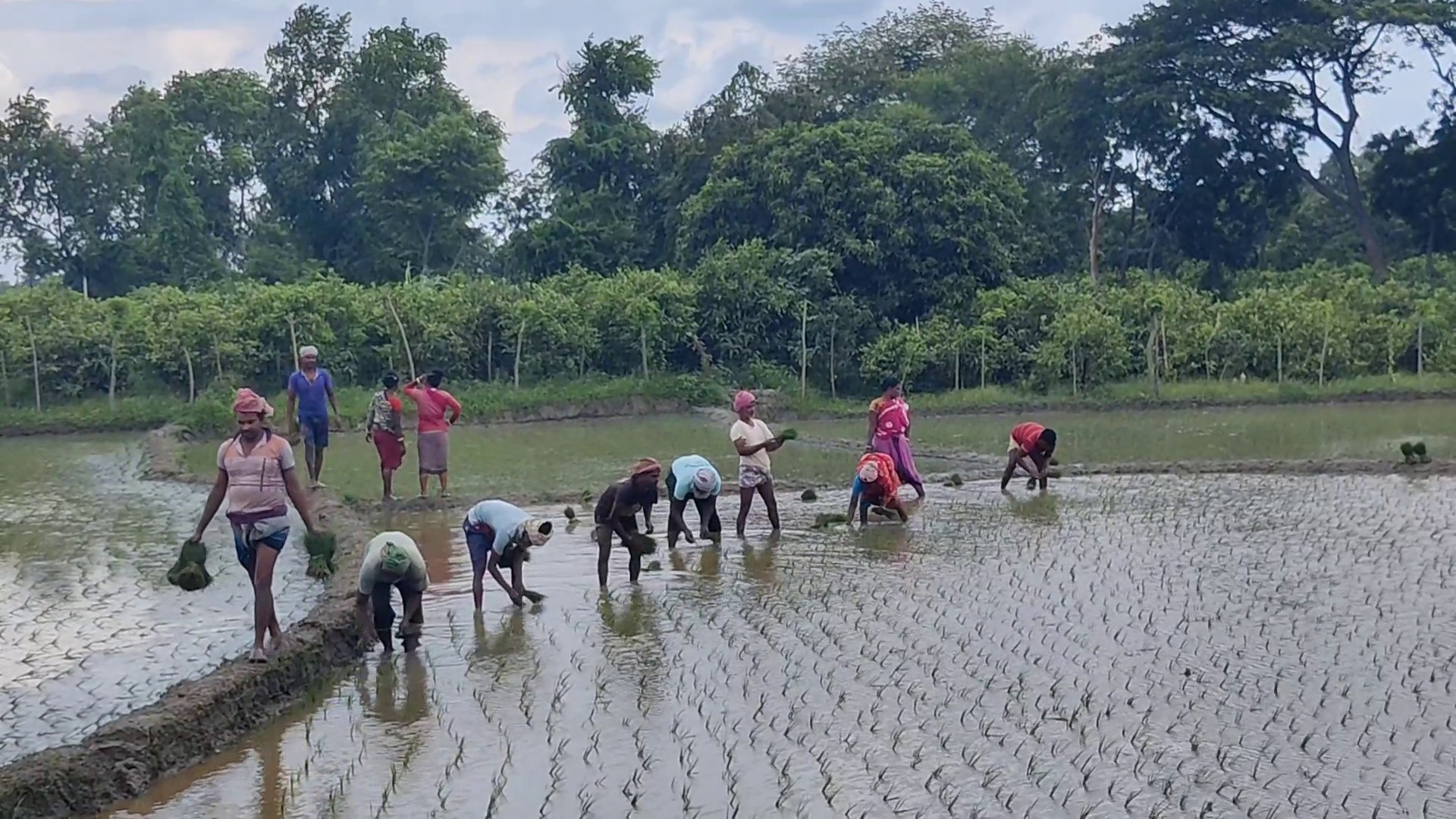Saif
Senior Member
- Messages
- 14,676
- Reaction score
- 7,646
- Origin

- Residence

- Axis Group

- Copy to clipboard
- Thread starter
- #201

'Bangladesh holds strategic significance in Bayer's growth map'
The Better Life Farming (BLF) initiative is a key global effort aimed at achieving this goal. Bangladesh is a key target country for Bayer’s BLF initiative, which is rapidly expanding its reach within the country, said Simon-Thorsten Wiebusch, Cluster Head, Bayer CropScience, India, Banglades
'Bangladesh holds strategic significance in Bayer's growth map'
FE Online
Published :
Jun 18, 2025 18:13
Updated :
Jun 18, 2025 18:13

Simon-Thorsten Wiebusch, Cluster Head of Bayer CropScience for India, Bangladesh, and Sri Lanka (right), is discussing with Md. Fazlur Rahman, Chairman of BCIC and Bayer CropScience Ltd, Bangladesh (middle), and Zahidul Islam, Managing Director of Bayer CropScience Ltd (left)
The Better Life Farming (BLF) initiative is a key global effort aimed at achieving this goal. Bangladesh is a key target country for Bayer’s BLF initiative, which is rapidly expanding its reach within the country, said Simon-Thorsten Wiebusch, Cluster Head, Bayer CropScience, India, Bangladesh & Sri Lanka (IBSL), during an interview with The Financial Express. Text of the interview follows:
Question (Q): Mr Wiebusch, how does Bayer view Bangladesh in terms of its agricultural market potential within the South Asia region?
Answer (A): Agriculture in Bangladesh has tremendous potential. Its large population and rising demand for food has created a significant opportunity for innovative solutions. The country’s strong agricultural backbone aligns with Bayer’s mission to transform farming through technology, productivity, and sustainability.
Q: What potential do you see in the Bangladeshi agricultural sector for Bayer's future growth?
A: Bangladesh has a young, dynamic farming community that’s increasingly open to adopting new technologies. The government is investing in modernizing agriculture, which creates opportunities for Bayer to introduce high-yield seeds, crop protection products, and digital farming tools. There’s also significant potential in areas like climate-resilient agriculture and precision farming.
Q: What is Bayer’s mid-to-long-term plan for Bangladesh?
A: Our plan is focused on expanding our footprint in Bangladesh by deepening farmer outreach, introducing new innovations, and building stronger local partnerships. We aim to bring more hybrid seeds, invest in training programs,advance agronomic practices by combining seeds, best crop protection solutions and ensuring soil health to ensure regenerative agriculture in Bangladesh.. Additionally, we're exploring collaborations with startups and Agri-tech platforms to accelerate digital transformation— all with the broader goal of meeting the growing need for nutritional security for 220 Million Bangladeshi's, while also enabling potential export opportunities in the future.
Q: Operating in a new market often comes with unique challenges. What has Bayer’s experience been in Bangladesh?
A: Every market has its own nuances and challenges. In Bangladesh, the opportunities far outweigh the challenges and with strong cooperation from the government and local stakeholders we are confident of overcoming the challenges. Our focus is on building long-term relationships rooted in trust, transparency, and shared value.
Q: Can you highlight some of Bayer’s ongoing initiatives that are making a difference in Bangladesh?
A: Certainly. We’ve launched farmer education programs focused on safe and effective use of crop protection solutions. Bayer has also initiated collaborations to support women in agriculture and promote sustainable practices. Our product portfolio is being continuously expanded to ensure farmers have access to the best inputs available. One such very successful initiative are the Better Life Farming centres set up by Bayer in Bangladesh.Bayer has set an SDG goal to empower 100 million smallholder farmers worldwide by 2030. The Better Life Farming (BLF) initiative is a key global effort aimed at achieving this goal. Bangladesh is a key target country for Bayer’s BLF initiative, which is rapidly expanding its reach within the country.
The BLF initiative seeks to enhance the income and living standards of smallholder farmers by providing holistic solutions both on and off the crop field, primarily through increased yields and the smart utilization of resources. With approximately 1,000 BLF centers nationwide, Bayer is connecting with smallholder farmers to offer innovative crop protection solutions and high-yield hybrid seeds. We also share knowledge of modern agricultural technology through extensive training sessions, result demonstrations, and method showcases led by dedicated agronomists.
As part of Bayer’s stewardship commitment, BLF promotes the safe use of pesticides among farmers. Additionally, we are exploring collaborations with technology, nutrient, and other industries to address needs beyond quality seeds and crop protection solutions.
Q: What kind of support or policy framework would you like to see from the Bangladesh government to encourage further investment?
A: A stable and predictable regulatory environment is key. We also welcome policies that encourage innovation, protect intellectual property, and support digital infrastructure in rural areas. Public-private partnerships, faster registration of new products and technologies and increased investment in agri-research will further boost the confidence of large and established companies like Bayer.
FE Online
Published :
Jun 18, 2025 18:13
Updated :
Jun 18, 2025 18:13
Simon-Thorsten Wiebusch, Cluster Head of Bayer CropScience for India, Bangladesh, and Sri Lanka (right), is discussing with Md. Fazlur Rahman, Chairman of BCIC and Bayer CropScience Ltd, Bangladesh (middle), and Zahidul Islam, Managing Director of Bayer CropScience Ltd (left)
The Better Life Farming (BLF) initiative is a key global effort aimed at achieving this goal. Bangladesh is a key target country for Bayer’s BLF initiative, which is rapidly expanding its reach within the country, said Simon-Thorsten Wiebusch, Cluster Head, Bayer CropScience, India, Bangladesh & Sri Lanka (IBSL), during an interview with The Financial Express. Text of the interview follows:
Question (Q): Mr Wiebusch, how does Bayer view Bangladesh in terms of its agricultural market potential within the South Asia region?
Answer (A): Agriculture in Bangladesh has tremendous potential. Its large population and rising demand for food has created a significant opportunity for innovative solutions. The country’s strong agricultural backbone aligns with Bayer’s mission to transform farming through technology, productivity, and sustainability.
Q: What potential do you see in the Bangladeshi agricultural sector for Bayer's future growth?
A: Bangladesh has a young, dynamic farming community that’s increasingly open to adopting new technologies. The government is investing in modernizing agriculture, which creates opportunities for Bayer to introduce high-yield seeds, crop protection products, and digital farming tools. There’s also significant potential in areas like climate-resilient agriculture and precision farming.
Q: What is Bayer’s mid-to-long-term plan for Bangladesh?
A: Our plan is focused on expanding our footprint in Bangladesh by deepening farmer outreach, introducing new innovations, and building stronger local partnerships. We aim to bring more hybrid seeds, invest in training programs,advance agronomic practices by combining seeds, best crop protection solutions and ensuring soil health to ensure regenerative agriculture in Bangladesh.. Additionally, we're exploring collaborations with startups and Agri-tech platforms to accelerate digital transformation— all with the broader goal of meeting the growing need for nutritional security for 220 Million Bangladeshi's, while also enabling potential export opportunities in the future.
Q: Operating in a new market often comes with unique challenges. What has Bayer’s experience been in Bangladesh?
A: Every market has its own nuances and challenges. In Bangladesh, the opportunities far outweigh the challenges and with strong cooperation from the government and local stakeholders we are confident of overcoming the challenges. Our focus is on building long-term relationships rooted in trust, transparency, and shared value.
Q: Can you highlight some of Bayer’s ongoing initiatives that are making a difference in Bangladesh?
A: Certainly. We’ve launched farmer education programs focused on safe and effective use of crop protection solutions. Bayer has also initiated collaborations to support women in agriculture and promote sustainable practices. Our product portfolio is being continuously expanded to ensure farmers have access to the best inputs available. One such very successful initiative are the Better Life Farming centres set up by Bayer in Bangladesh.Bayer has set an SDG goal to empower 100 million smallholder farmers worldwide by 2030. The Better Life Farming (BLF) initiative is a key global effort aimed at achieving this goal. Bangladesh is a key target country for Bayer’s BLF initiative, which is rapidly expanding its reach within the country.
The BLF initiative seeks to enhance the income and living standards of smallholder farmers by providing holistic solutions both on and off the crop field, primarily through increased yields and the smart utilization of resources. With approximately 1,000 BLF centers nationwide, Bayer is connecting with smallholder farmers to offer innovative crop protection solutions and high-yield hybrid seeds. We also share knowledge of modern agricultural technology through extensive training sessions, result demonstrations, and method showcases led by dedicated agronomists.
As part of Bayer’s stewardship commitment, BLF promotes the safe use of pesticides among farmers. Additionally, we are exploring collaborations with technology, nutrient, and other industries to address needs beyond quality seeds and crop protection solutions.
Q: What kind of support or policy framework would you like to see from the Bangladesh government to encourage further investment?
A: A stable and predictable regulatory environment is key. We also welcome policies that encourage innovation, protect intellectual property, and support digital infrastructure in rural areas. Public-private partnerships, faster registration of new products and technologies and increased investment in agri-research will further boost the confidence of large and established companies like Bayer.











